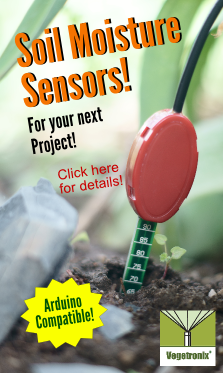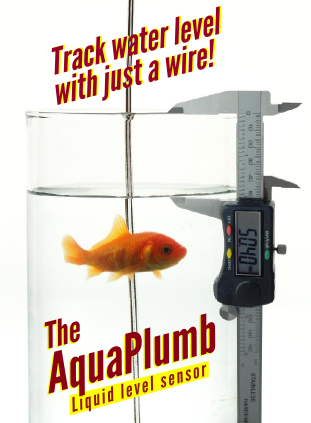How to Solder and Desolder Surface Mount Parts
By Tim Daycounter
This tutorial explains how to solder and desolder surface mount technology (SMT) parts, which can often be intimidating to the novice or old timers who have only dealt with through hole technology.
SMT parts have many advantages over their older through hole ancestors, namely: smaller size, lower cost manufacturing costs, and less likelihood of obsolescence. However, an often overlooked advantage is the ease at which surface mount components can be soldered and desoldered. At first this might seem like a controversial subject, but it isn't to engineers and technicians to have grown accustomed to working with both types of parts. Just try desoldering a 16 pin DIP from a PCB with a solder sucker without ripping a trace, and you'll understand how hard reworking a through hole part can be. Compare this to a desoldering a 16 pin SOIC which can be removed in a matter of seconds with no special equipment.
SMT Soldering Equipment
The following items are all you need to solder and desolder surface mount parts:
- A temperature controlled solder station. No - that 10 dollar soldering iron from radio shack isn't going to do the job. You need a decent $100 dollar iron, that has a temperature dial. Try a Weller. Likewise you really don't need an expensive one that has a gazillion specialized tips like a Metcal.
- A good tip. Solder tips need to be replaced occasionally. If they ever get a cavity or pock marks in them, that means it's time for another one. Use a medium conical one. Too pointy isn't good and too blunt is not good either.
- Solder flux, that comes in a bottle that you brush on.
- Solder, of course. Choose a solder that is relatively thin.
- Solder wick is critical for soldering larger parts.
- Solder flux remover which can be sprayed on the board from a can.
- A good heat gun is necessary for desoldering larger parts.
- Keep some water around for the sponge in your solder station. A spray bottle works well.
- Tin foil for a heat shield for use with heat guns.
- 3x reading glasses. These are great for seeing tiny SMT parts. You can get them at any drug store for under 10 bucks. The only problem is that the field of view is very close, so you many need to bend over close to the board to make it come into focus.
- A 10x jeweler's loop for inspection. These can be purchased at any jewelry supply house for about 20 bucks.
- An Exacto knife is useful for lifting pins or pushing parts into place.
General Soldering Advice
The most important aspect to soldering is having a good tinned soldering tip. The heat will tend to oxidize the tip. An oxidized tip will repel solder. To tin the tip, wipe it on a wet sponge, and melt a glob of solder onto it, and then wipe it again.
Keep the soldering tip at a lower temperature, around 700 F so that pads don't get lifted and so parts are not damaged.
Regularly replace your tips. If you are constantly using it, then once a month is not unreasonable.
Soldering SMT devices
Two terminal devices such as resistors and caps are generally the easiest parts to start out with. Just place the part onto its location on the PCB, heat the joint between the terminals on the part and the PCB while touch it with solder, and the solder will flow. After one side has been soldered quickly solder the opposite side in the same way. Surface tension of the liquid solder should center the part. Use the solder tip and the solder strand to push the part into place. If you get too much solder on the part, just use some solder wick to suck up any extra.
Soldering SOICs isn't much different. Just line up the part. Tack a single lead down, and and push the part so the pins are aligned with the pads. Then solder each of the other pins. If solder bridges across any of the pins, it isn't a big deal. Just wipe away the solder with solder wick.
Most people are really intimated by the big quad flat pack (QFP) parts that have a hundred pins or more. However, these are just as easy to solder. People mistakenly think that they need to solder each pin individually without causing any solder shorts. In reality the approach is to tack it into position, and to then cover it with solder, ignoring any shorts, since these can easily be removed with solder wick.
The hardest part is to get the chip aligned properly on the pads. You can tell if things are aligned because you will get a moiré effect if they aren't. Read glasses of 3X can be very useful in seeing if things are lined up. Once the chip is lined up, tack down a single pin to its pad. Then recheck to make sure everything is aligned. Then tack down a second point, which fixes the chip such that it can't move or rotate. At this stage, wipe solder flux across all the pins so that solder will freely flow. Then freely melt solder across all the pins. It's okay to short them out with a big flowing solder glob. Gently wipe the solder gob toward one side of the pins so that it collects on one corner. Then use solder wick to remove the excess solder. Put the solder wick on top of the glob and press the soldering iron down upon the braid. You will see the solder being sucked into the braid. The solder wick should be wiped in a direction with the pins, and not lateral to the pins, as this will bend them, or cause pads to be lifted. Repeat on all four sides, and then spray with solder flux remover. Use a jeweler's loop to check for shorts. If you find any just wipe them away with heated solder braid. When you get good, putting on a 200 pin TQFP part should only take a few minutes.
Desoldering SMT Devices
Resistors and caps are the easiest components to desolder. You just have to alternately heat each side of the component until it just wipes away. Use solder wick to clean off the pads.
SOICs are a little more challenging, but are removed in nearly the same way. To remove them you must add more solder, such that it forms a glob on both rows of pins. Then alternatively heat each side, until you can gently wipe the part off the board.
Larger quad packs require a heat gun. Just heat the part with a high power heat gun, and use an Exacto knife to flip the part off. Then use solder wick to wipe clean the pads. Heat guns have the tendency to heat up up all the surrounding parts, and to melt connectors and headers. As a precaution, it is often wise to place tin foil as a heat shield over parts that you want to keep cool.

